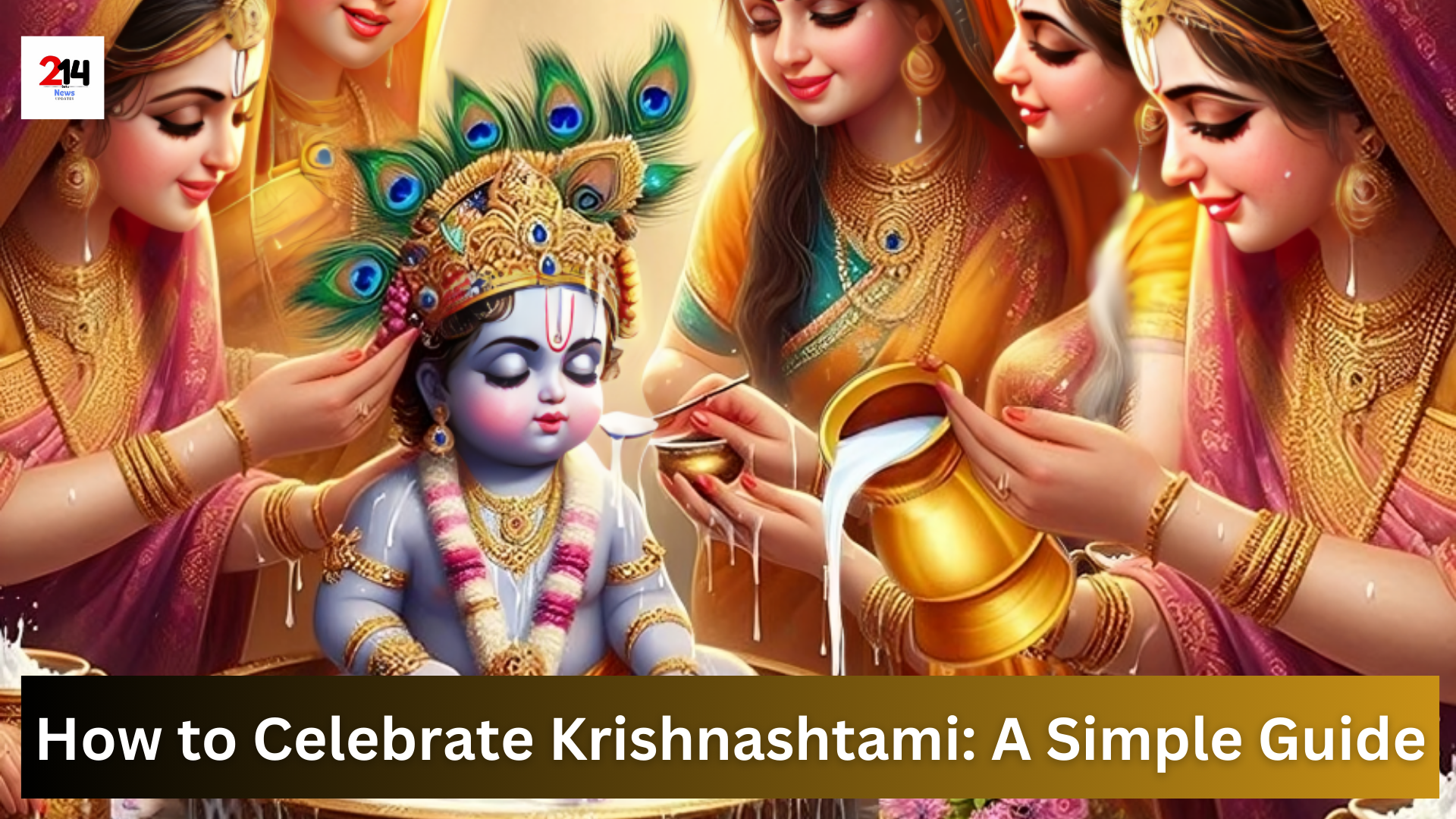
Janmashtami is a truly special festival in the Hindu culture. Considered the day when Lord Krishna was born, people, with unbridled joy and devotion, perform various rituals to praise Lord Krishna. Below is an easy guideline on how you can celebrate this festival in a meaningful manner.
Getting Ready for the Celebration
Embellish the Krishna Idol: Primarily, decorate the small idol of the baby Krishna, who is also called Laddu Gopal. You can adorn the image with flowers, bright-colored clothing, and peacock feathers to make it look extremely charming. All these decorations mean expressions of love and respect for Lord Krishna.
Welcoming Lord Krishna: To symbolize the entry of Lord Krishna into your home, create small footprints from your entrance door to the place where the idol is placed. These small footprints can be made using a mixture of rice flour and water, marking the path that baby Krishna might take to come to your home.
Do the Puja (Worship)
Lighting a Lamp: Light a lamp with five wicks; this represents light and wisdom. In this way, we remove darkness from our lives and invite divine blessings.
Chanting Mantras: Recite 108 times the following mantra: “Om Sri Krishna Parabrahmane Namah.” This mantra refers to the presence of Krishna and helps focus the mind on devotion and inner peace.
Offering Food: It includes simple foods that are Lord Krishna’s favorites, such as butter, fruits, milk, and sweets. These food items are offered to the idol as an act of devotion. When offering these items, do so with a feeling of love and gratitude.
Abhishekam: You can do an extensive worship in which you can give the bath to an idol with milk, curd, honey, butter, and water. All these are born out of/identified with special meaning:
Milk is the representation of purity.
Curd is the nourisher.
Honey is the representation of the sweet aspects in life.
Ghee is the symbol of strength.
Water is a symbol of clarity and life.
Dressing and Offering Food Again: By taking the idol out of the bath, the idol is dried first and then dressed in new clothes. One may also put the idol on a jhula, which is a small swing that showcases much of Krishna’s playful nature. After that, all the prepared foods (called “bhog” in Hindi) are offered to Krishna, including butter and sweets, because these items are his favorites.
Sacred Texts and Songs: Hear from the Bhagavad Gita or any other scriptures that illustrate the life and philosophy of Krishna. Devotional singing of songs, bhajans, and kirtans is a part of the spiritual ambiance that enables one to develop closeness and love toward Krishna.
Closing Worship
Aarti: Perform an aarti service, which is the process of waving a lit lamp in front of the idol while singing prayers. This is generally done at the end of the worship service.
Fast Breaking: On Janmashtami, most people engage in fasting, which is a period one observes without consuming some foods until midnight. The breaking fast is taken after the pujas for Krishna’s birth in honoring and demonstrating dedication.
Fun Activities: Krishnashtami is also a period for fun and cultural activities. This is an event where, according to the story, a pot of curd is hung at a higher place, after which people form a human pyramid to reach it. This activity is very popular in many parts of India and reflects Krishna’s playful side.
Conclusion
Krishnashtami is a festival filled with devotions, joy, and cultural religiousness. In taking simple steps like these, you bring closer the divine light which fills home with the blessings of Krishna. After all, the most important thing in celebrating is the love and sincerity with which you give in every action
Celebrating Krishna Janmashtami: A Festival of Joy and Devotion

